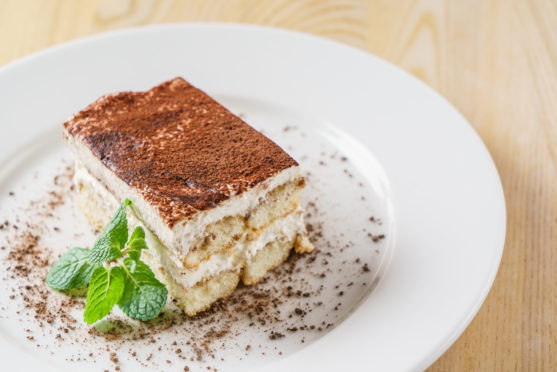This week, Julia Bryce takes a look at the Italian coffee dessert that took British restaurants and dinner parties by storm.
When it comes to coffee-flavoured desserts, nothing can beat the infamous tiramisu.
An Italian creation, this simple dish can be easily adapted to taste and can boast light coffee flavours, or a full-on fragrant espresso kick.
A dessert which made a name for itself in the 19th century, it was in the 1980s where this number had its time to shine in the UK, gracing restaurant upon restaurant with its deliciousness.
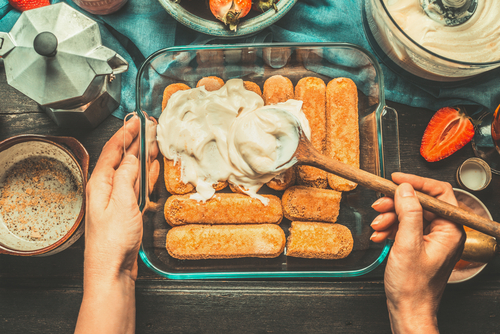
Tiramisu, which means “pick me up” or “cheer/carry me up” is made with savoiardi (ladyfingers) dipped in coffee, and is layered with a cream made from eggs, sugar and mascarpone, then topped with cocoa powder.
Made into a range of cakes, bakes and other desserts, the tiramisu is a recognisable staple and can be found on the menus of numerous restaurants right across the globe.
The dessert is thought to date back in some form to 17th century Siena, however, the name ‘tiramisu’ was not known in cookbooks until the late 60s.
It is thought to have risen to prominence in the 1960s in the region of Veneto, Italy, at Le Beccherie restaurant in Treviso. The owner, confectioner Roberto Linguanotto, is often credited with being the mastermind behind the dessert, however, historical records suggest it may have originated in Treviso in the 1800s. And it is said the recipe was invented by a “maitresse” (madam) of a house of pleasure in the centre of the city, who had developed an aphrodisiac dessert.
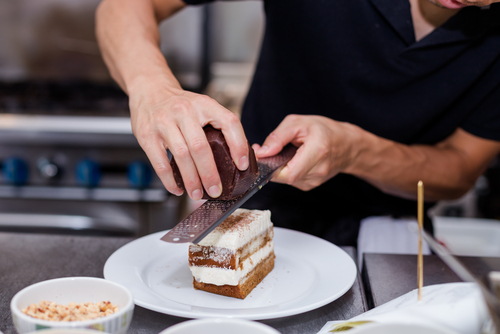
Like other Italian foods including lasagne and the custard dessert zuppa inglese, the tiramisu is also layered, and has similarities to the British trifle.
Tiramisu can also be served with a boozy twist, with the addition of coffee liqueurs such as Amaretto or Kahlua, or other spirits like dark rum, brandy, Marsala wine, Irish cream and more can also make an appearance.
There is also a Tiramisu World Cup in Treviso (which takes place on Friday October 30 and Saturday October 31) later this year. The event celebrates the popular dessert and sees amateur chefs compete in two categories; the original recipe and creative recipe.
Nigella Lawson also dubbed the tiramisu as the ‘Black Forest gateau of the 1990s’ in her 1998 book How to Eat.
Tiramisu
(Serves 10-12)
This recipe has been created by the team at Mac’s Pizzeria in Aberdeen
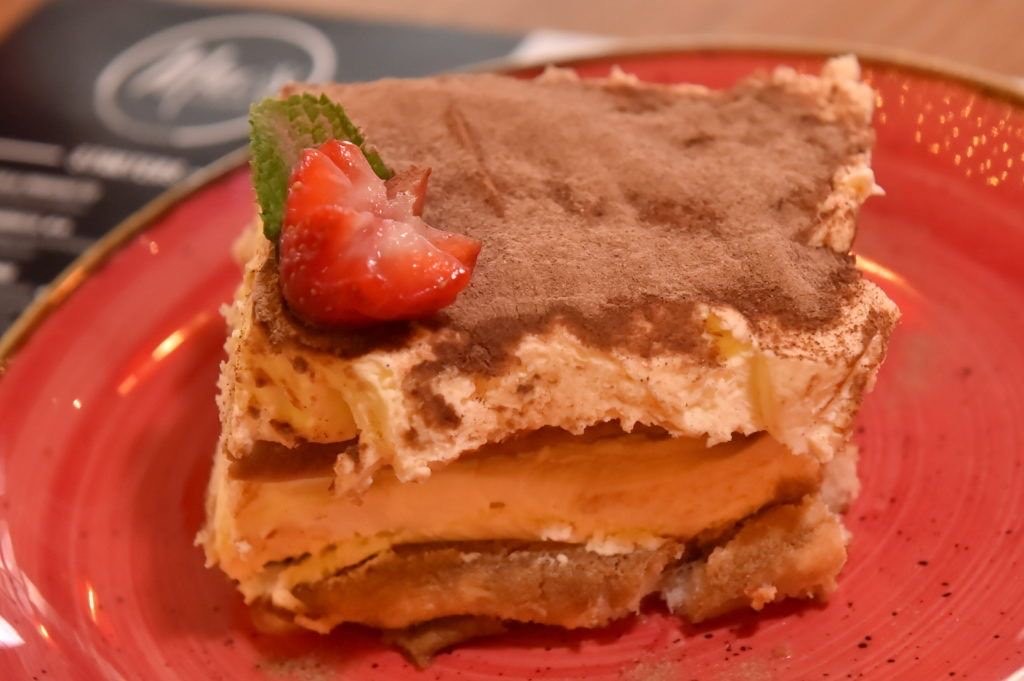
Ingredients
- 1200ml double cream
- 500ml mascarpone
- 6 tbsp caster sugar
- 600ml coffee espresso
- 140ml marsala wine
- 4 tbsp cocoa powder
- 28 Savoiardi tiramisu sponge fingers
Method
- Whisk the cream, mascarpone and sugar together until it is the same consistency as thick whipped cream.
- Dip the sponge fingers into your ready brewed espresso and wine mix until soaked, but not soggy.
- In a dish, layer the sponge fingers on the bottom and top with half of the cream mixture.
- Add another layer of the sponge fingers and pour the rest of the cream mixture on top.
- Cover the dish and chill in the freezer overnight.
- To serve, sprinkle the cocoa powder all over the tiramisu.
Recipes with a twist:
Espresso Martini
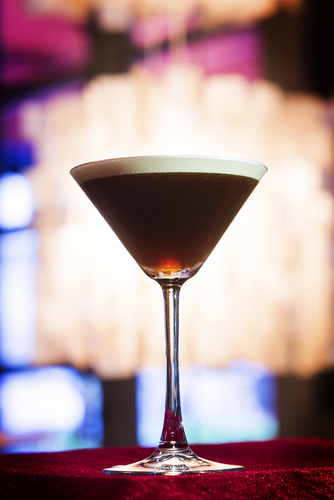
Ingredients
- 40ml vodka
- 10ml simple syrup (you can add more if you prefer it sweeter)
- 20ml coffee liqueur
- 20ml Espresso
- Coffee beans (optional for garnish)
Method
- Add all of the ingredients into a cocktail shaker and fill it with ice.
- Shake and strain it into a cocktail glass and garnish with coffee beans.
Or you can try out this whipped version instead for a little extra indulgence.
WATCH: Try this Instagrammable Whipped Espresso Martini cocktail
Tiramisu cake
(Serves 12)
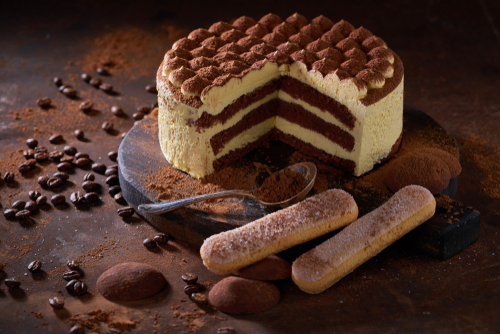
Ingredients
- 1 store-bought white sponge cake mix (and the ingredients needed to make it)
- 1 tsp instant coffee powder
- 64g coffee
- 5 tbsp coffee flavoured liqueur
- 250g marscarpone cheese
- 150g caster sugar
- 480g double cream
- 2 tbsp cocoa powder
Method
- Preheat oven to 175 °C and grease three nine-inch cake tins.
- Make the cake mix and divide two thirds of the mix into two of the cake tins. Stir instant coffee into remaining mix and pour into the final tin.
- Bake in the oven for around 25 minutes, or until a knife/toothpick in the centre comes out clean.
- Leave to cool in the tins for around 15 minutes and empty onto a wire rack
- In a bowl combine the brewed coffee and one tablespoon of coffee liqueur. Leave to the side.
- For the filling, take a small bowl and combine mascarpone, 100g sugar and two tablespoons of coffee liqueur. Mix together and beat just until smooth. Cover with clingfilm and refrigerate.
- For the icing on top, mix the cream, 50g sugar and two tablespoons coffee liqueur until stiff. Fold 120g of the cream mixture into the coffee filling mixture. Set the remaining cream mix to the side.
- Place a plain cake layer on a plate and pour a third of the coffee mixture over it. You should poke holes in it to make it easier for the mixture to be absorbed deeper. Spread half of the filling mixture on top.
- Add the coffee-flavoured cake layer next, again, poking holes in it and pouring another third of the coffee mixture over it. Spread the remaining filling on top. Add the last cake layer and pour the last of the coffee mixture over it, too.
- Finish the cake with the icing mixture you set to the side earlier. Scrape it on top and around the cake until it is covered. Sieve cocoa powder over it and leave to set in the fridge for around 20-30 minutes. Then enjoy!
Read more in this series…
Throwback Thursday: Duck a L’Orange, the trendy dish that sent the 1960s quackers
Throwback Thursday: Trifle, the 80s dessert that’s not just for Christmas
